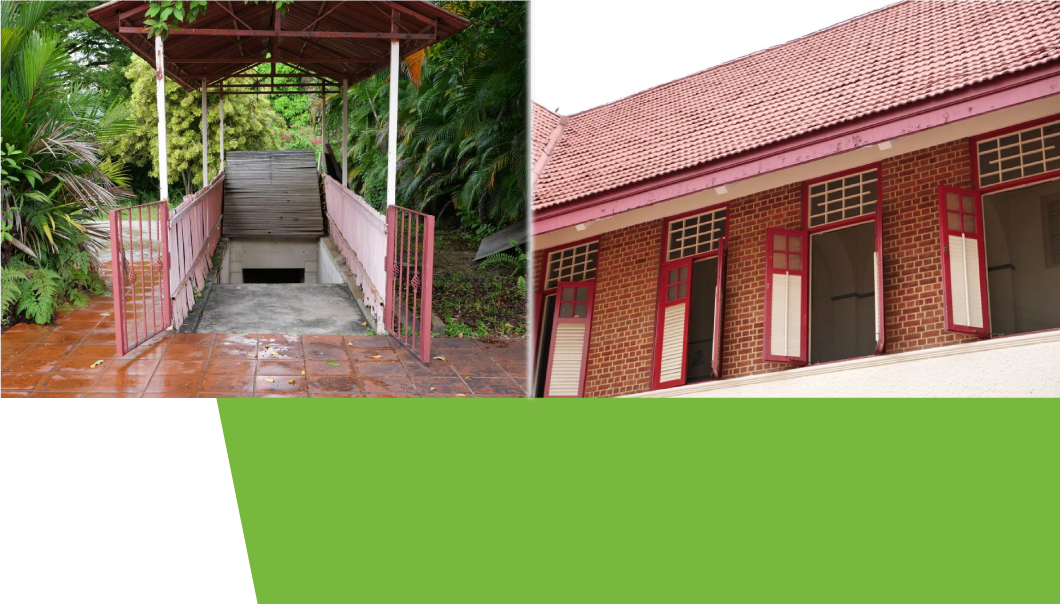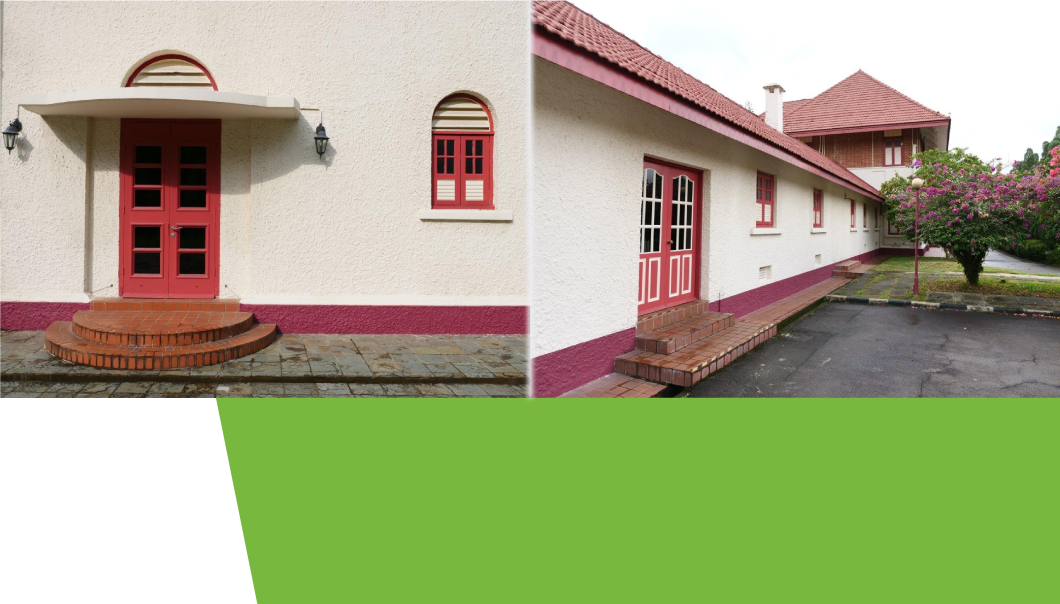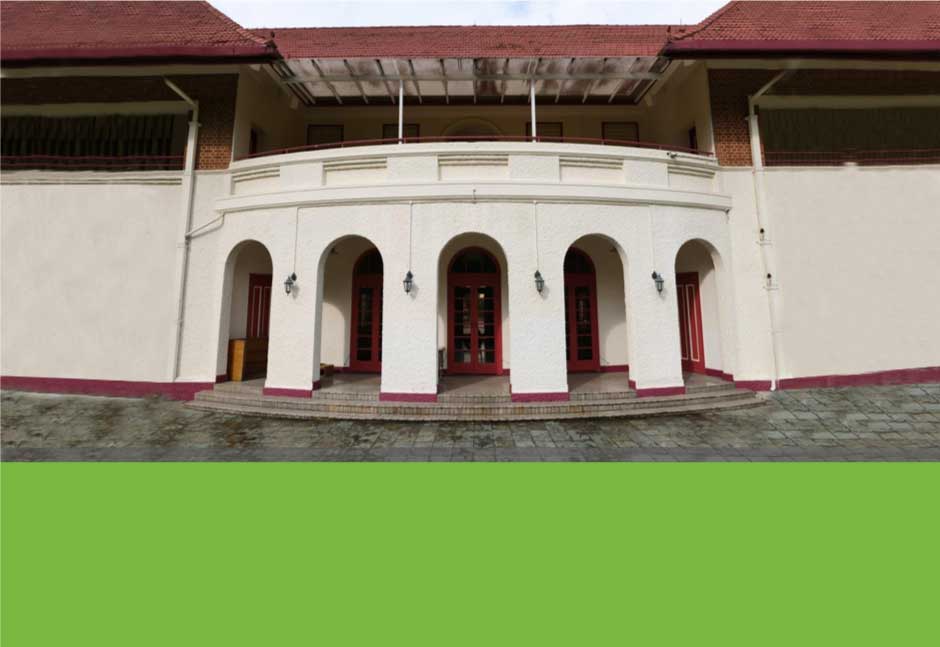One house, many names. The Old Admiralty House, located in the heart of Sembawang, has quite a history!
Built in 1939 by the British architect Edwin Lutyens, the design of the house was heavily influenced by the Arts and Crafts movement prevalent in the late 19th-century and early 20th-century. The structure comprises a two-storey brick building and one-storey wing on its northwest side. Its roof is high-hipped and clad with French terracotta tiles. While the first storey is heavily stuccoed and painted white, the second storey features exposed brickwork, lending the building its distinctive look.
Located on a small hill in what was the former Sembawang Naval Base, the house and the base it was built on reflected the escalating situation in the 1940s, as Britain attempted to fortify Singapore in preparation for a Japanese offensive in World War II. The house takes up a commanding position on the hill, and was used as the strategic planning headquarters of the British armed forces during World War II.

It was the second in what was to have been a trio of large residences intended for each commander of the armed services. Completed in 1940, two years after the opening of the naval base, the house would only see its first occupants in 1941, when it housed Rear Admiral Ernest John Spooner.
Following the end of World War II, the house became the residence of the flag officer of the Malayan Area and was named the “Nelson House”, before then assuming the name “Admiralty House” in 1958 when it became the residence of the Far East Station commander-in-chief.
Later on, it became the residence of the commander of the Australia, New Zealand and the United Kingdom (ANZUK) forces when the British withdrew their forces from Singapore in 1971, and was renamed yet again, this time as the “ANZUK House”.
Following the disbandment of the ANZUK force in 1975, the house has seen use as restaurants, guest houses and country clubs, before it was gazetted as a national monument in 2002. It was last utilised by Furen International School between 2011 to 2019, with the school working closely with the Preservation of Monuments Board to restore the grandeur of the house and its grounds.

Today, the Old Admiralty House is set to be renamed again. This time, it will be known as the “Canberra House Library” – a public library where visitors will have access to a good collection of titles on nature, history and gardening.
With a new name comes a new lease of life– the next exciting chapter of this heritage State property awaits!
Sources:
Wan, M. H., & Lau, J. (2009). Heritage places of Singapore. Singapore: Marshall Cavendish Editions, p. 216.
Edwards, N., & Keys, P. (1988). Singapore: A guide to buildings, streets, places. Singapore: Times Books International, p. 68.
Old Admiralty House | NLB Infopedia e-resources



